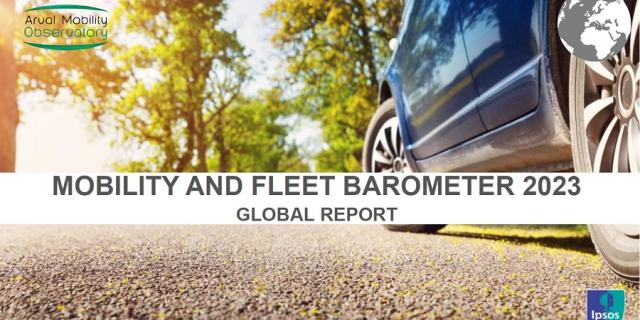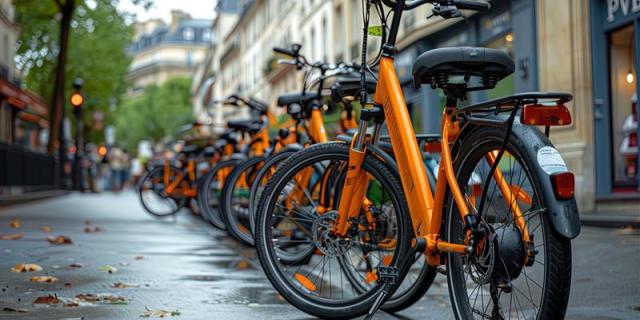The 14th edition of the Fleet Barometer study carried out by the Corporate Vehicle Observatory in 12 countries (Belgium, Czech Republic, UK, France, Germany, Italy, The Netherlands, Poland, Portugal, Spain, Switzerland, Turkey) was released in May of this year highlighting some interesting and challenging trends for the future of the corporate fleets in terms of mobility and new technologies.
Four majors facts have to be highlighted this year:
1- ALTERNATIVES ENERGIES
In the current transition period with the incoming of WLTP, key themes and points of interest of this year are growth expectations for alternative vehicles and alternative mobility services in the broader sense. If yesterday almost all fleet vehicles were running on diesel, this 2018 survey shows that the landscape is changing: 30% of very large companies have already switched to electric vehicles and 27% to hybrids. Large and very large companies also say that they want to accelerate the movement in the coming years ... small and medium-sized companies will not be left out since they plan to follow the movement, as evidenced by the following figures:
- respectively 68% and 48% of very large and large companies have already or plan to integrate in their live fleets alternative energies (HEV, PHEV, BEV, CNG, LPG or Hydrogen)
- this value remains high even among small businesses since this concerns 32% of them.
The leading countries to implement such changes are Belgium, UK, the Netherlands and Switzerland.
More and more car policies are opened to alternative energies now that the TCO of those is closing in on combustion engine based models. This is facilitated by local government’s fiscal policies, but also because lessors are more confident than before about residual values of particularly the batteries powering full electric vehicles, as well as their remaining capacity after a first full cycle of experience. The key remaining points of attention of battery powered alternatives are the charging infrastructure and having enough comfort about their true range in varying circumstances. Lessors are helping their clients to make the right strategic and tactical choices for future powertrain choices during this challenging transitional period, during which OEMs need to adapt their models to ever more challenging European norms around CO2 and NOx emissions. Corporates are also more and more conscious of their direct impact on the environment in the broader sense and thus CSR objectives are progressively more integrated into corporate fleet strategies. The new WLTP test is already largely taken into account by large and very large companies in the definition of their car policies (respectively 46% and 62% of them). Small and medium-sized companies intend also to take into account these new values issued from this new protocol in their results over the next 3 years. It is obvious that the CO2 emission rate is taken into account to define part of the rules of the company car policies, but the corporates also tell us to be sensitive to NOx and fine particles even if they don’t have the possibility to fix the numerical caps as it is the case for CO2. Having enough benchmarking insights readily available on alternative strategies, but also on fuel spend and more broadly on the TCO of existing and new vehicle models, is the expertise that corporate fleet managers and decision makers welcome and appreciate nowadays to come from their lessors.
2- MOBILITY SERVICES
The interest of fleet managers for mobility services to be implemented in their company is on the increase. Car Sharing and Ride sharing as a service are one of the major topics of interest for fleet managers. As for the implementation of alternative energy vehicles, 44% of the fleet managers are considering or have already implemented one of these two services in their companies. Mobility budget management is also a service in a few countries that fleet managers are considering more and more. This concerns about half to one-third of very large and large businesses. The most advanced countries in this field are Belgium, Switzerland, the Netherlands, France and United Kingdom. The share of companies that have integrated telematics tools into their fleets is also a proof of the evolution of the way of apprehending the needs in terms of mobility. A large proportion of large and very large companies (almost a third) have already equipped all or part of their fleets with telematics tools. This rate reaches almost half of the large and very large companies in countries like the Netherlands, Poland or UK. Today, these tools are mainly used for real-time vehicle location, but also to optimize the fleet TCO or to improve drivers’ behaviour and resulting safety.
3- FLEET GROWTH
Every year, we measure and find that business confidence is increasing with respect to the growth of their fleet. Our indicator increased by 1 point on the two previous years and by 2 points on the last measure. The largest companies are the ones that express the highest level of confidence in the future. Today we reach high levels of confidence:
- For the very large companies, 27% anticipate an increase of their fleets size versus only 9% who anticipate a contraction
- For the smallest companies, the share of companies anticipating a rise is also greater: 13% versus only 4% who anticipate a decline
More specifically, the countries where large and very large companies are the most confident are Belgium, Spain, France and Italy. For small and medium-sized corporates, the most confidents in the future are in the UK.
4- FINANCING SOLUTIONS
Operational leasing is the solution most often preferred by large and very large companies: 38% of large companies and 51% of very large companies have declared that Full Service Leasing is the main source of funding for their vehicle fleets. These values are stable over time. On the other hand, in the case of smaller companies, we see a change: over the past 3 years; the part of companies using Operational Leasing as a financing fleet vehicles mode has increased from 9% to 12% for small businesses and from 17% to 21% for medium-sized corporates.











